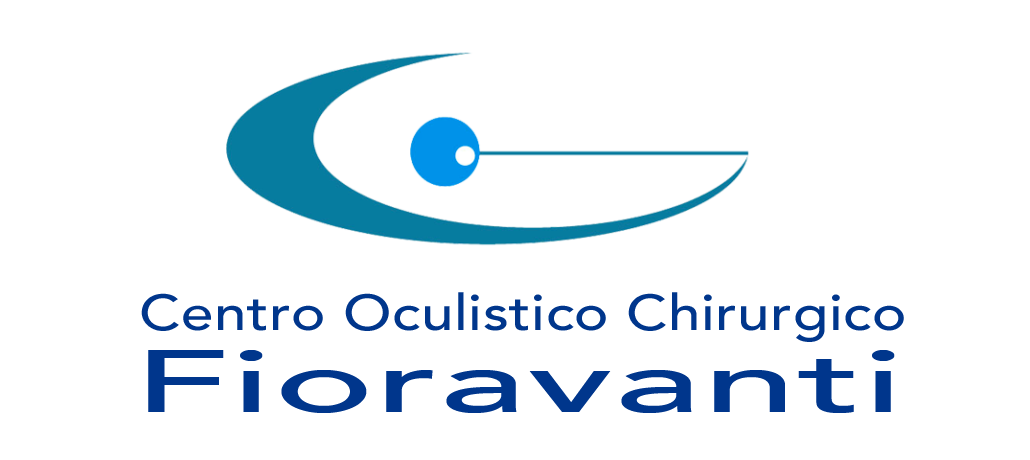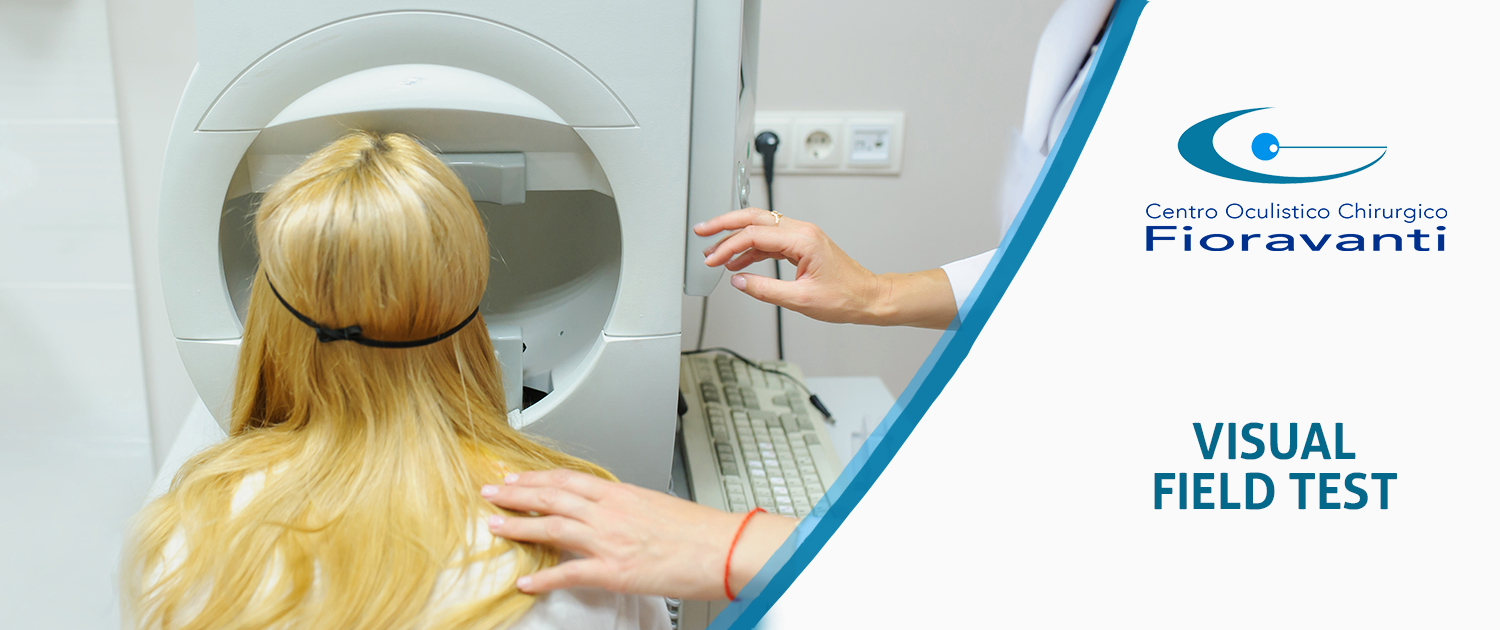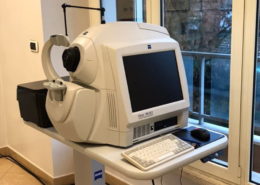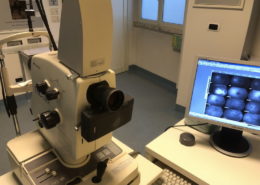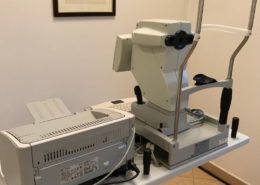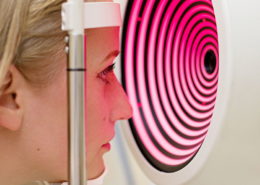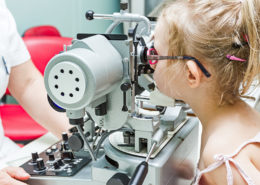Visual field test
The visual field is everything you see looking straight ahead, including your side and central (straight ahead) vision. Since you probably use both your eyes at all times, you may not notice any changes in one eye’s visual field unless you close the other eye.
Eye diseases such as optic nerve damage or glaucoma can affect only one eye.You may not know that there is a problem unless each eye is tested separately.
During a visual field test, one eye is temporarily patched. You are asked to look straight ahead at a fixed space and to watch for targets to appear in your field of vision.
Because it is also a test of your side vision, it is very important that you keep looking straight ahead. Do not move your eyes to look for the target but wait until a light appears; in your side vision.
Keep your eye steady, looking straight ahead, and wait for the test target to come into your sight. Don’t move your eye to look for it.
Promptly press the machine’s button (or answer aloud if asked) as soon as you think you see the target.
The visual field examination is important to detect many diseases that affect the eye, optic nerve or brain. One way for your ophthalmologist to tell if you have glaucoma is to detect the small blind spots that begin to appear in the early stage of the disease. By repeating the test in the future, your physician can then tell if the small blind spots are getting larger. The visual field test provides information which no other test can. Your ophthalmologist will interpret the results and discuss them with you.
Discover more exams
This post is also available in: Italian
